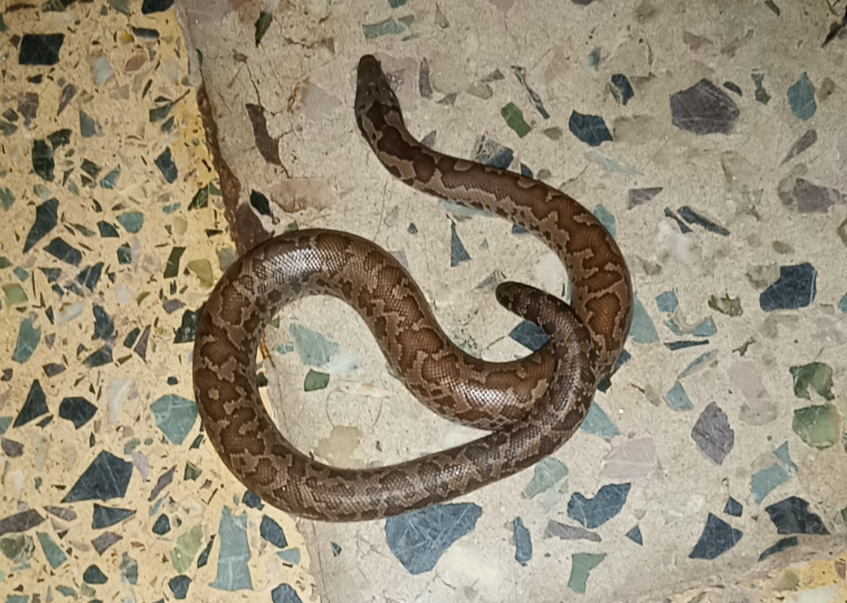Whitaker’s Sand Boa Diet: What They Eat
Facts:
-
Scientific Name: Eryx whitakeri
-
Common Names: Whitaker’s Sand Boa, Indian Sand Boa (local references)
-
Size: 30–60 cm (12–24 inches)
-
Distribution: Coastal Tamil Nadu and Kerala, India
-
Conservation Status: Vulnerable (IUCN Red List)
Expert Burrower
Whitaker’s Sand Boa has a cylindrical, muscular body with smooth scales—perfectly adapted for a life underground. It uses its snout to push through sand and soil effortlessly.
Non-Venomous and Harmless to Humans
Unlike venomous snakes, this species kills its prey by constriction. It feeds primarily on small rodents, reptiles, and birds, helping to control pest populations naturally.
Hard to Find in the Wild
Due to its secretive nature and limited geographic range, the Whitaker’s Sand Boa is rarely seen in the wild, even by researchers. This makes it one of the least understood snakes in India.
Small Size, Big Impact
Despite being smaller than other boas, it plays a major ecological role by balancing prey populations in its environment.
Threatened by Habitat Loss
Rapid urbanization, farming, and habitat destruction pose serious threats to this species. It is currently listed as Vulnerable, which means active conservation is needed to protect it from extinction.
Biodiversity is crucial for a healthy ecosystem. Even small, hidden creatures like the Whitaker’s Sand Boa play essential roles in pest control and soil health. Sadly, due to myths and fear surrounding snakes, many species are needlessly killed.
Raising awareness about non-venomous snakes in India can change public perception and support wildlife protection efforts.
The Whitaker’s Sand Boa may not be as famous as cobras or pythons, but its quiet life beneath the sand is no less extraordinary. Rare, harmless, and ecologically important, this unique Indian snake deserves more attention and protection.


0 Comments